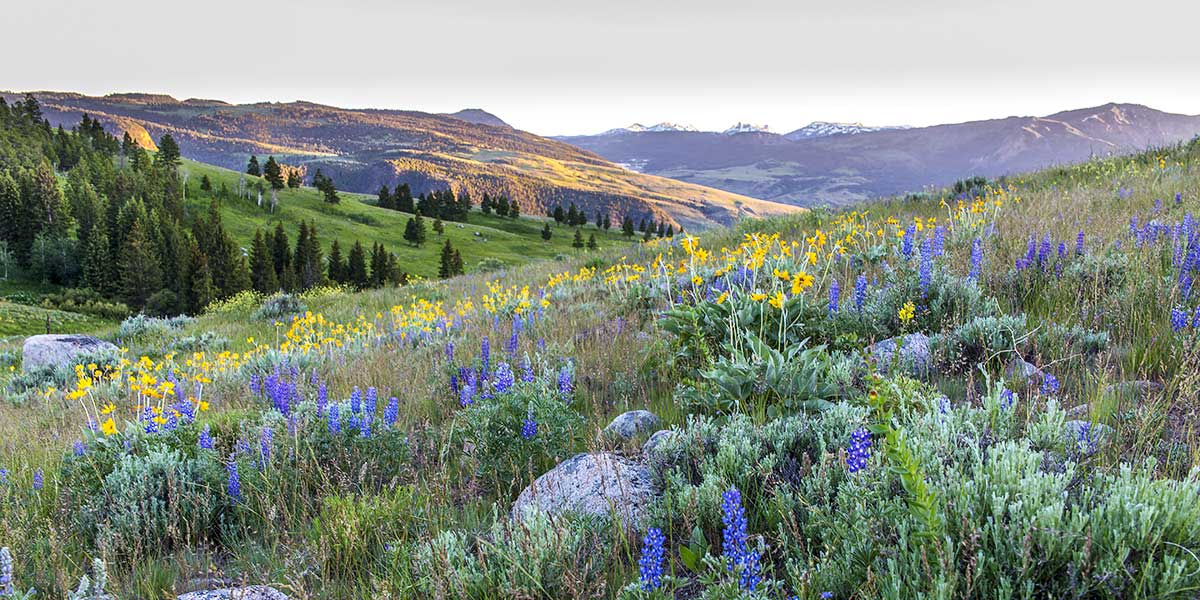549 acres and 3 billion gallons protected and secured
Almost 30 years ago, RMEF played a pivotal role in forever protecting Dome Mountain, indispensable winter range for the Northern Yellowstone elk herd. In the dark days of the early 1900s when fewer than 50,000 elk remained in North America, animals from this herd literally restored wild elk across the continent. Last August the herd received crucial insurance for its future when RMEF joined forces with Trout Unlimited and Kinross Gold in a unique partnership that secured a vital link in the migration corridor connecting Yellowstone National Park to Dome Mountain.
When fierce storms bury the Yellowstone Plateau in snow, 90 percent of the 7,500-strong Northern Herd leaves the park. Three-quarters of those animals head for Dome. Most of them cross Mineral Hill. Prospectors struck gold there shortly after the Civil War and for several decades in the late 1800s, mining boomed. When gold prices spiked, the Mineral Hill Mine resumed production from 1980 to 1996. Award-winning reclamation efforts began in 2000, helping to return much of the landscape to a mix of native vegetation where elk, mule deer, pronghorns, moose and grizzlies thrive once more.
Last summer the mine’s owner, Kinross Gold, donated a conservation easement to RMEF on 549 acres that encompassed the mine, forever protecting it from subdivision or development in an area where land can fetch up to $200,000 per acre. On top of that, they donated senior water rights on Bear and Pine creeks to Trout Unlimited, guaranteeing that roughly 3 billion gallons per year once claimed by mining operations will remain in the two creeks and flow into the Yellowstone River. Both Bear and Pine provide spawning habitat for native cutthroats and deliver that most precious commodity: clean, cold water.
In August 2016, an outbreak of proliferative kidney disease sparked a massive fish kill in the Yellowstone. In response, Montana Fish, Wildlife and Parks closed 183 miles of the river at the apex of the fishing season. Angling and tourism generate $70 million in direct spending each year in Park County alone. Biologists concluded that low stream flows and high water temps exacerbated the kill. As Montana faces hotter, drier summers, Pine and Bear creeks will deliver more cold water into the river while providing fish a refuge when the main stem gets too warm.
“As elk need grass, fish need water every day,” says Trout Unlimited President Chris Wood. “This agreement ensures that elk, fish and the sportsmen who depend on them all benefit. Bully for Kinross—a mining company—for seeing the greater good and donating land and water for the benefit of us all.”
In a rare display of bipartisan support, Montana’s entire congressional delegation, its governor and the superintendent of Yellowstone National Park all spoke at a dedication ceremony for the easement, praising Kinross for its donation and RMEF and TU for the innovative partnership. Located at the head of Paradise Valley, some of Montana’s most prized real estate surrounds Mineral Hill.
“This property easily could have been developed into 40 high-end residential lots,” says Mike Mueller, RMEF senior lands program manager. “Instead, Kinross saw the incredible conservation value in this land.”
